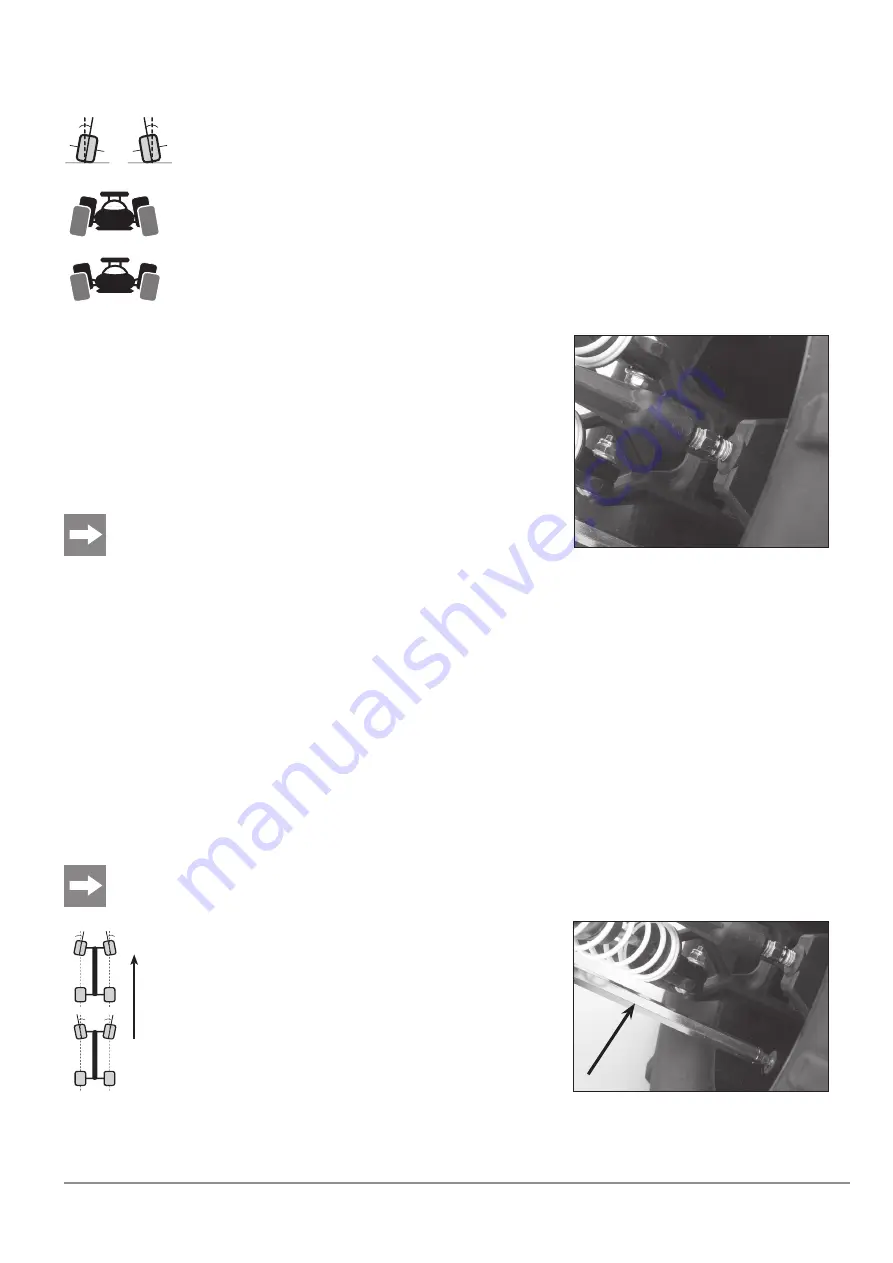
53
© REELY 10/08
53
53
c) Setting the camber inclination
The camber is the inclination of the wheel level as viewed from the front (vertical).
Negative camber
(wheel top edges point inward) on the front wheels increases the cornering power of the wheels when
driving in bends; the steering reacts more directly, the steering forces are reduced. At the same time, the wheel is pushed onto the
axle leg in the direction of the axis.
This stops an axial bearing clearance, the driving behavior is calmer.
A negative inclination on the rear wheels reduces the tendency of the rear of the vehicle to swerve in bends.
By setting a negative inclination, the wear on the inside of the tires increases. However, this effect can be compensated by setting
a toe-in.
Adjusting the inclination in positive direction until a
positive inclination
(wheel top edges point outward) reduces the cornering
power of the wheels.
Adjusting the inclination at the front and rear wheels
Right/ left threaded rods with spanner flat (5mm) to fine tune the inclination of the camber are located
respectively in the upper transverse links.
Fine tuning of inclination on front and rear wheels
Twist clamping screw in the upper transverse link clockwise:
The upper edge of the wheel is pulled inward in direction “negative inclination”.
Twist clamping screw in the upper transverse link anticlockwise:
The upper edge of the wheel is pulled outward in direction “positive inclination”.
Ensure a balanced tuning of the cornering power of front and rear axles as differences
can result in an over-steering or an under-steering driving behavior.
d) Setting the alignment
The alignment designates the position of the wheel level to the driving direction.
During the drive the tires are pushed apart in the front because of the rolling friction and this is why they are no longer exactly parallel to the drive direction.
To balance, the wheels of the stationary vehicle can be set, so that they point slightly inward.
This toe-in effects an improved lateral cornering of the tire and therefore a more direct response of the steering If a milder response of steering is desired,
this can be achieved accordingly by adjusting a toe-out , i.e. the wheels of the stationary vehicle point outward.
A trail angle of 0° on the front axis ensures the best driveability on almost any ground.
A trail angle of more than 3° toe-in or toe-out leads to handling problems and reduces the speed.
For a rough adjustment of the alignment, the outer steering links can be screwed on the steering plate at two further fastening points.
Doing so will change the Ackerman angle.
Clamping screws for separate wheel alignment of the front wheels are located in the right and left steering link between the steering lever and the steering
plate.
The toe-in of the front wheel must not exceed 4°.
Toe-in
Turn the clamping bolt clockwise.
The track rod gets longer and the wheel is pressed to the back and outwards.
Setting a toe-in causes the inner side of the tyre to wear faster.
Toe-out
Turn the clamping bolt anticlockwise.
The track rod gets shorter and the wheel is pressed to the rear and to the inside.
Setting a toe-out causes the outer side of the tyre to wear faster.
•
•
•
•
carsturzneg.eps
sturzneg1.eps
Negative camber
carsturzpos.eps
Positive camber
vorspur.eps
nachspur.eps
Summary of Contents for 23 58 10
Page 122: ...121 REELY 12 08 121 121 ...
Page 123: ...122 4WD MonsterTruck Destroyer XXL 1 8 No 23 58 10 ...
Page 124: ...123 REELY 12 08 123 123 ...
















































